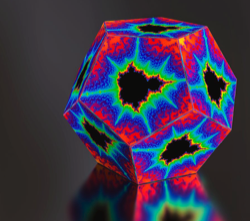
|
Cococubed.com
|
| Pentadiagonals and Heptadiagonals |
Home
Astronomy Research
2025 Neutrinos From De-excitation
Radiative Opacity
2024 Neutrino Emission from Stars
2023 White Dwarfs & 12C(α,γ)16O
2023 MESA VI
2022 Earendel, A Highly Magnified Star
2022 Black Hole Mass Spectrum
2021 Skye Equation of State
2021 White Dwarf Pulsations & 22Ne
Software Instruments
Stellar equation of states
EOS with ionization
EOS for supernovae
Chemical potentials
Stellar atmospheres
Voigt Function
Jeans escape
Polytropic stars
Cold white dwarfs
Adiabatic white dwarfs
Cold neutron stars
Stellar opacities
Neutrino energy loss rates
Ephemeris routines
Fermi-Dirac functions
Polyhedra volume
Plane - cube intersection
Coating an ellipsoid
Nuclear reaction networks
Nuclear statistical equilibrium
Laminar deflagrations
CJ detonations
ZND detonations
Fitting to conic sections
Unusual linear algebra
Derivatives on uneven grids
Pentadiagonal solver
Quadratics, Cubics, Quartics
Supernova light curves
Exact Riemann solutions
1D PPM hydrodynamics
Hydrodynamic test cases
Galactic chemical evolution
Universal two-body problem
Circular and elliptical 3 body
The pendulum
Phyllotaxis
MESA
MESA-Web
FLASH
Zingale's software
Brown's dStar
GR1D code
Iliadis' STARLIB database
Herwig's NuGRID
Meyer's NetNuc
AAS Journals
2025 AAS YouTube
2025 Listing of 500+ Author Videos
2025 AAS Peer Review Workshops
2025 ASU Energy in Everyday Life
2025 MESA Classroom
Other Stuff:
Bicycle Adventures
Illustrations
Presentations
Contact: F.X.Timmes
my one page vitae,
full vitae,
research statement, and
teaching statement.
Tridiagonal matrices arise from using a 3 point finite difference stencil in one-dimension. Pentadiagonal matrices arise from using a 5 point stencil in one-dimension or a 3 point stencil in two-dimensions. The tool pentadiagonal.tbz contains routine to solve pentadiagonal linear system of equations \begin{equation} a_i u_{i-2} + b_i u_{i-1} + c_i u_i + d_i u_{i+1} + e_iu_{i+2} = f_i \label{eq1} \tag{1} \end{equation} and cyclic pentadiagonal systems with nonzero entries in the lower left and upper right corners of the matrix:
\begin{equation} \left[\begin{array}{ccccccccccc} c_{1} & d_{1} & e_1 & 0 & 0 & \ldots & & & & p_1 & p_2\\ b_{2} & c_{2} & d_2 & e_2 & 0 & \ldots & & & & & p_3\\ a_{3} & b_{3} & c_3 & d_3 & e_3 & \ldots & & & & & 0 \\ & & & & & \ldots & & & & & \\ & & & & & \ldots & & & & & \\ & & & & & \ldots & & & & & \\ 0 & & & & & \ldots & a_{n-2} & b_{n-2} & c_{n-2} & d_{n-2} & e_{n-2} \\ p_4 & & & & & \ldots & 0 & a_{n-1} & b_{n-1} & c_{n-1} & e_{n-1} \\ p_5 & p_6 & & & & \ldots & 0 & 0 & a_{n} & b_{n} & c_{n} \end{array}\right] \left[\begin{array}{c} u_1 \\ u_2 \\ u_3 \\ \ldots \\ \ldots \\ \ldots \\ u_{n-2}\\ u_{n-1}\\ u_n \end{array}\right] = \left[\begin{array}{c} r_1 \\ r_2 \\ r_3 \\ \ldots \\ \ldots \\ \ldots \\ r_{n-2}\\ r_{n-1}\\ r_n \end{array}\right] \label{eq2} \tag{2} \end{equation}
Such cyclic forms usually arise from periodic boundary conditions.
Heptadiagonal matrices arise from using a 7 point stencil in one-dimension or a 3 point stencil in three-dimensions. The tool heptadiagonal.tbz contains routines to solve heptadiagonal linear system of equations \begin{equation} D_i u_{i-3} + B_i u_{i-2} + b_i u_{i-1} + d_i u_i + a_i u_{i+1} + A_iu_{i+2} + C_iu_{i+3} = r_i \label{eq3} \tag{3} \end{equation} and cyclic heptadiagonal systems with nonzero entries in the lower left and upper right corners of the matrix: \begin{equation} \left[\begin{array}{ccccccccccc} d_{1} & a_{1} & A_1 & C_1 & 0 & 0 & \ldots & p_1 & p_2 & p_3 \\ b_{2} & d_{2} & a_2 & A_2 & C_2 & \ddots & \ddots & \ldots & p_4 & p_5 \\ B_{3} & b_{3} & d_3 & a_3 & A_3 & C_3 & \ddots & \ddots & \dots & p_6 \\ D_{4} & B_{4} & b_4 & d_4 & a_4 & A_4 & C_4 & \ddots & \ddots & 0 \\ 0 & \ddots & \ddots & \ddots & \ddots & \ddots & \ddots & \ddots & \ddots & \vdots \\ \vdots & \ddots & \ddots & \ddots & \ddots & \ddots & \ddots & \ddots & \ddots & \\ 0 & \ddots & \ddots & D_{n-3} & B_{n-3} & b_{n-3} & d_{n-3} & a_{n-3} & A_{n-3} & C_{n-3} \\ p_7 & \ldots & \ddots & \ddots & D_{n-2} & B_{n-2} & b_{n-2} & d_{n-2} & a_{n-2} & A_{n-2} \\ p_8 & p_9 & \ldots & \ddots & 0 & D_{n-1} & B_{n-1} & b_{n-1} & d_{n-1} & a_{n-1} \\ p_{10} & p_{11} & p_{12} & \ldots & 0 & 0 & D_n & B_{n} & b_{n} & d_{n} \\ \end{array}\right] \left[\begin{array}{c} u_1 \\ u_2 \\ u_3 \\ \ldots \\ \ldots \\ \ldots \\ \ldots \\ \ldots \\ \ldots \\ u_{n-2}\\ u_{n-1}\\ u_n \end{array}\right] = \left[\begin{array}{c} r_1 \\ r_2 \\ r_3 \\ \ldots \\ \ldots \\ \ldots \\ \ldots \\ \ldots \\ \ldots \\ r_{n-2}\\ r_{n-1}\\ r_n \end{array}\right] \label{eq4} \tag{4} \end{equation}
A shoutout to Jerry Straka for extending the cyclic heptadiagonal to the full lower left and upper right corners!